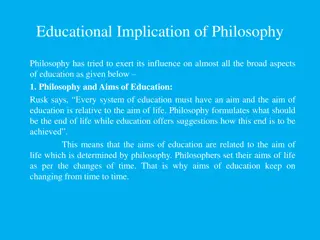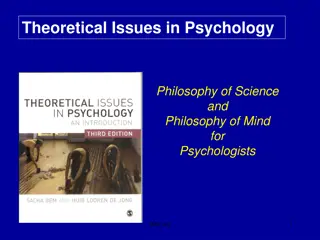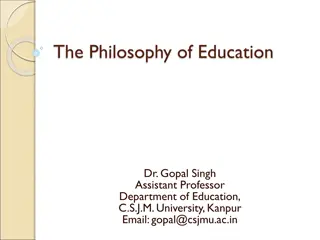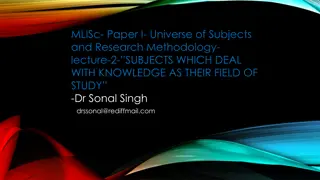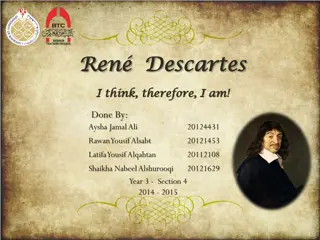Developing Your Philosophy of Teaching
A teaching philosophy is a self-reflective statement of beliefs about teaching and learning, including concrete examples of classroom practices. Learn how to write and structure it effectively.
Download Presentation

Please find below an Image/Link to download the presentation.
The content on the website is provided AS IS for your information and personal use only. It may not be sold, licensed, or shared on other websites without obtaining consent from the author.If you encounter any issues during the download, it is possible that the publisher has removed the file from their server.
You are allowed to download the files provided on this website for personal or commercial use, subject to the condition that they are used lawfully. All files are the property of their respective owners.
The content on the website is provided AS IS for your information and personal use only. It may not be sold, licensed, or shared on other websites without obtaining consent from the author.
E N D
Presentation Transcript
Developing Your Philosophy of Teaching KAREN DENSKY, PHD COORDINATOR, TEACHING & LEARNING
Outline 1. What is a POTS? 2. Why do I need one? 3. What does a good one look like? 4. How do I write one?
What? A teaching philosophy is a self-reflective statement of your beliefs about teaching and learning. It should also discuss how you put your beliefs into practice by including concrete examples of what you do or anticipate doing in the classroom. (https://cei.umn.edu/support-services/tutorials/writing-teaching-philosophy)
How long? A Philosophy of Teaching Statement should be 1 page single spaced or 2 pages double spaced
Why? To concisely gather together your beliefs about teaching and learning so that you can easily articulate them to your students, your peers, and search committees. An introduction to your teaching portfolio, thus setting the stage for the reader of that portfolio. A means to professional growth because it requires you to give examples of how you enact your philosophy, and requires you to consider the degree to which your teaching practice connects to your beliefs about teaching and learning. (https://cei.umn.edu/support-services/tutorials/writing-teaching-philosophy)
Examples Samples available from: History Biology Education Chemistry https://cei.umn.edu/support-services/tutorials/writing-teaching-philosophy/teaching-philosophy-samples#education
More Examples Nursing Anthropology Social Work Business Communications Music http://www.fctl.ucf.edu/facultysuccess/professionalportfolios/philosophies.php
Rubric for Philosophy of Teaching Statement Meeting Expectations Somewhat Meeting Expectations Not Meeting Expectations Purpose & Audience Clear focus or theme Appropriate tone Free of clich s Holds attention Voice Authentic ( I ) Reveals self Demonstrates investment Demonstrates enthusiasm Beliefs & Illustrative Examples Clearly stated beliefs Rationale for beliefs Connection between ELT and teaching & learning Specific examples of strategies, methods, or theories Conventions Headings, paragraphs, transitions Appropriate length & thematic style Distracting grammar, spelling errors
Key Question #1 How do people learn?
Key Question #2 How do I facilitate that learning?
Key Question #3 What goals do I have for my students?
Key Question #4 Why do I teach the way that I do?
Key Question #5 What do I do to implement these ideas about teaching and learning in the classroom? Give specific examples.
Key Question #6 Are these things working? How do I know?
Key Question #7 Do my students meet the goals? How do I know?
Key Question #8 How will you continue to grow as a teacher?
Literary Elements Using metaphors Be consistent Be unique Common metaphors: gardening, traveling, building, farming Using quotes Frame the statement with a quote or Connect the quote throughout the POTS
References University of Central Florida. (2017). Sample Teaching Philosophies. Retrieved from: http://www.fctl.ucf.edu/facultysuccess/professionalportfolios/philosophies.php University of Minnesota. (2017).Writing a Teaching Philosophy. Retrieved from: https://cei.umn.edu/support-services/tutorials/writing-teaching-philosophy







